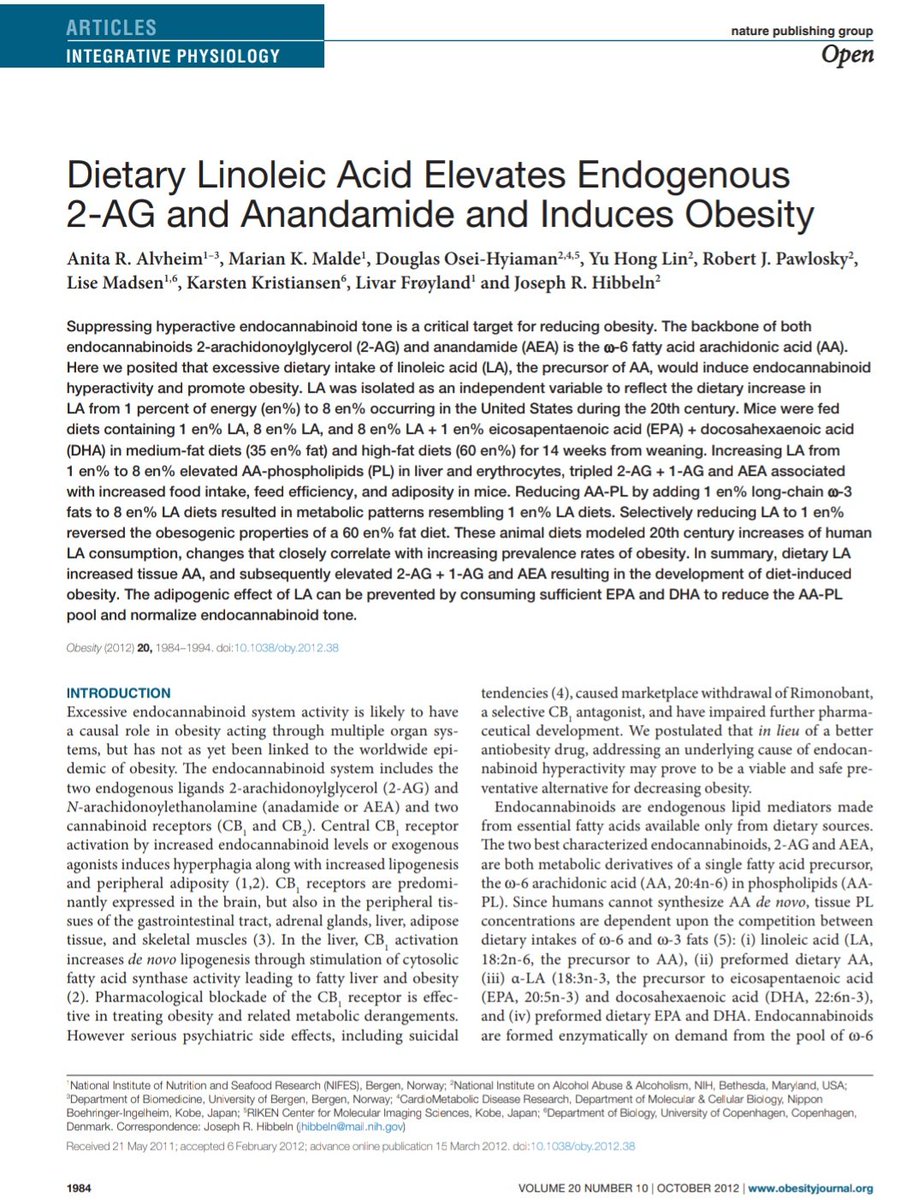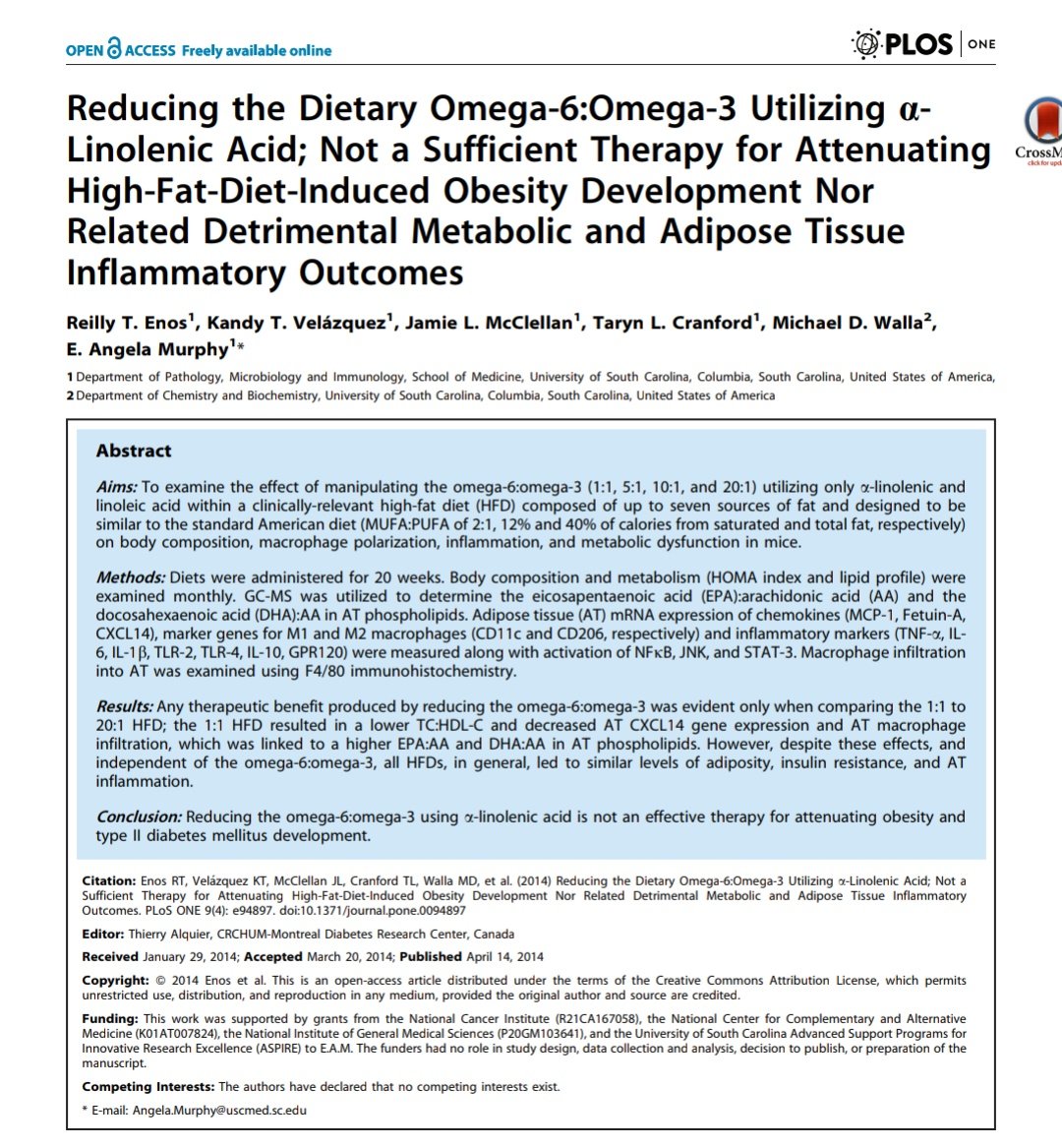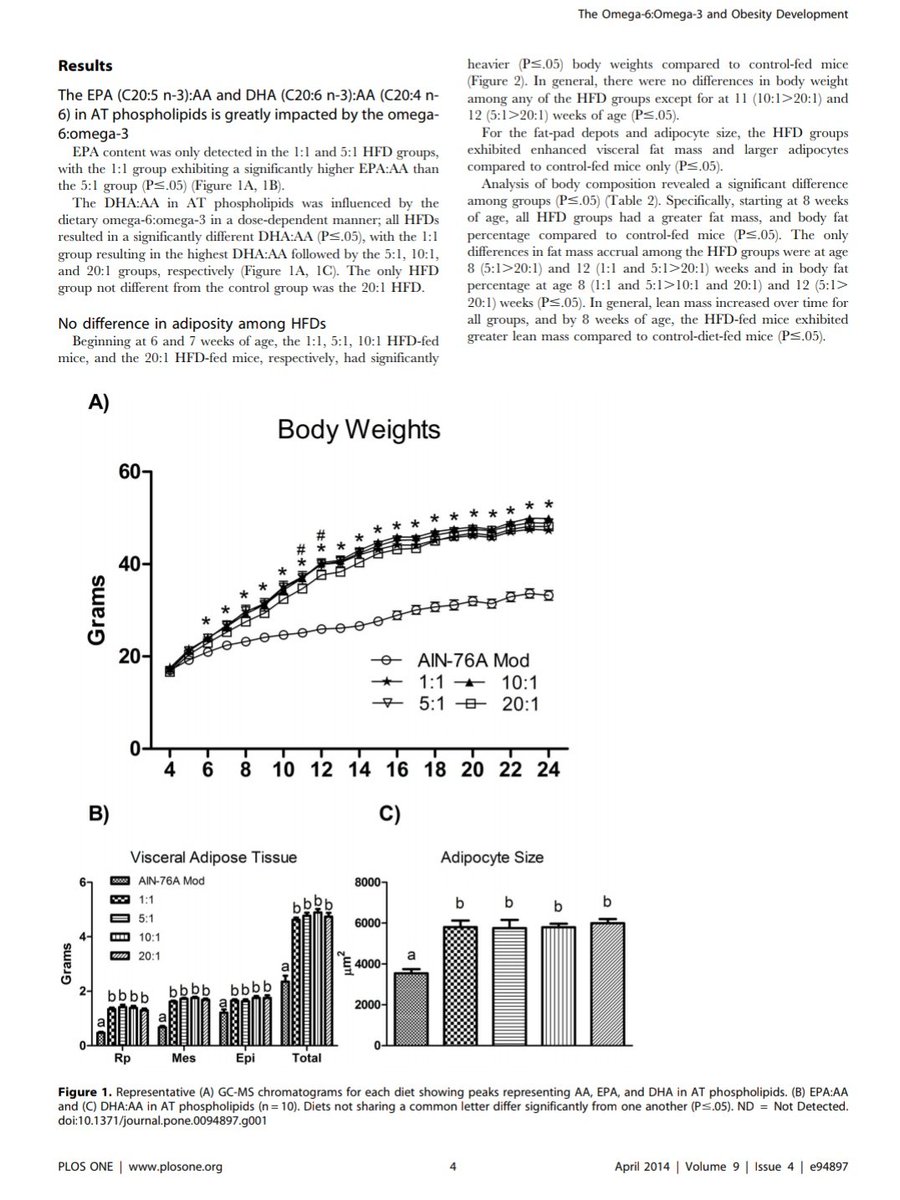This mouse study is used as evidence that seed oils (linoleic acid) causes obesity. It uses very well controlled diets. Mice eating 1% linoleic acid gained less fat than those eating 8%.
But I found the results a bit odd so I thought I& #39;d look into it.
https://pubmed.ncbi.nlm.nih.gov/22334255/ ">https://pubmed.ncbi.nlm.nih.gov/22334255/...
But I found the results a bit odd so I thought I& #39;d look into it.
https://pubmed.ncbi.nlm.nih.gov/22334255/ ">https://pubmed.ncbi.nlm.nih.gov/22334255/...
Another more recent study (that doesn& #39;t get cited much) also used very well controlled diets.
This one found no effect in mice varying the linoleic acid between 4.7% and 9%
https://journals.plos.org/plosone/article?id=10.1371/journal.pone.0094897">https://journals.plos.org/plosone/a...
This one found no effect in mice varying the linoleic acid between 4.7% and 9%
https://journals.plos.org/plosone/article?id=10.1371/journal.pone.0094897">https://journals.plos.org/plosone/a...
I& #39;ve seen other mouse studies with high and low linoleic acid that don& #39;t have the effects seen in the first study.
The first study has a curious result that the feed efficiency in low linoleic acid diets was lower. This means they were eating more food at the same body weight.
The first study has a curious result that the feed efficiency in low linoleic acid diets was lower. This means they were eating more food at the same body weight.
This got me thinking about essential fatty acid deficiency in mice.
How much linoleic acid do mice need?
How much linoleic acid do mice need?
You can look up the AIN-93 diet. A bit like dietary guidelines for laboratory mouse diets.
This recommends a minimum of about 3% linoleic acid, and more for growing, pregnant, or lactating mice. https://pubmed.ncbi.nlm.nih.gov/8229312/ ">https://pubmed.ncbi.nlm.nih.gov/8229312/&...
This recommends a minimum of about 3% linoleic acid, and more for growing, pregnant, or lactating mice. https://pubmed.ncbi.nlm.nih.gov/8229312/ ">https://pubmed.ncbi.nlm.nih.gov/8229312/&...
So 1% linoleic acid in the first study seems a bit low.
What about studies on essential fatty acid deficiency in mice?
What about studies on essential fatty acid deficiency in mice?
This study was researching essential fatty acid deficiency in mice and compared diet of 34% fat with an adequate diet.
In the deficient diet 3 mol% of that fat was linoleic acid. 30% in the other diet.
I make that roughly 1% linoleic acid vs 10%.
https://journals.physiology.org/doi/full/10.1152/ajpgi.00094.2002">https://journals.physiology.org/doi/full/...
In the deficient diet 3 mol% of that fat was linoleic acid. 30% in the other diet.
I make that roughly 1% linoleic acid vs 10%.
https://journals.physiology.org/doi/full/10.1152/ajpgi.00094.2002">https://journals.physiology.org/doi/full/...
The low linoleic acid diet in this study caused deficiency and the essential fatty acid deficient mice could not absorb fat from their diet very well.
This has been shown in rats too.
This has been shown in rats too.
So the effects of the very low linoleic acid diet in the first study could be because linoleic acid was fattening, or they could be because the mice on the low linoleic acid diet were starting to suffer a linoleic acid deficiency and not absorbing their food.
Using mouse studies for nutrition research is difficult and you& #39;ve got to be careful drawing conclusions from them.

 Read on Twitter
Read on Twitter







